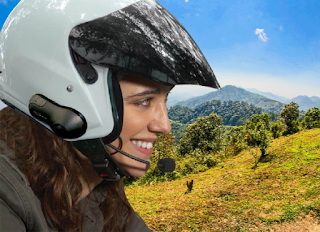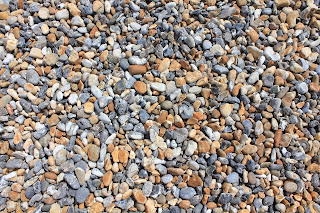Best Checklist for Motorcycle Road Trip Planning
There is no denying that motorcycle tours can be a thrilling adventure. But for motorcyclists, stumbling over the road is not as easy as refueling and heading off to your destination. There is also a big difference between riding a motorbike on a local highway on a Sunday afternoon and traveling hundreds of miles across the state.
The first trips on a motorcycle may be the beginning of a new regime. In a survey of American Motorcyclist Association employees, some respondents said it can take years of trial and error to learn the best ways to approach a long route. AMA staff offers a range of tips such as "wear your backpack's hydration system to drink while driving" and "a nap can work wonders on a long day."
Without the luxury of a place, packing what you need for your trip on a bike can be even more difficult. We have compiled a list of the most important elements of motorcycle trip planning from seasoned bikers and the Harley Davidson website.
So, before you hit the highway, here are 26 things you should consider
1. Watch out for fatigue
Safety is obviously a big problem, with fatigue being an important factor in accidents. According to information about motorcyclists published by the Alaskan Department of Motor Vehicles, “Riding a motorcycle is much more tiring than driving a car. When you plan a long trip, remember that you will get tired much sooner than by car. "
With sufficient planning and preparation, while keeping an eye on what is potentially booked during your daily trips, your trip can be a safe and enjoyable experience, filled with all the reasons why you ride in the first place. Be sure to follow motorcycle safety tips to stay alert.
2. Take a practice trip.
The road can seem endless when you go on a long trip. Six hours on a bike might be perfectly acceptable for a seasoned hiker, but if your previous record was two hours, the extra four might feel like a marathon. Get used to longer bike rides by taking training rides ahead of time to learn how to ride long distances.
Training runs will make you realize the importance of sitting comfortably. When you are on the road and in motion, you do not have the luxury of changing your position as if you were sitting in a work chair or car seat. The standard seat supplied with your motorcycle may not be the best option for extended seating. Consider changing your seat to a more comfortable model before riding. You can also adjust the handlebars and add a backrest and footrests to help reduce the chances of back pain and stiffness in your limbs.
3. Invest in a good windshield
If you don't already have one, consider installing a windshield. The feeling of the wind can be one of the pleasures of the open road, but riding for several hours straight at a speed of 60 to 70 miles per hour can tire you out. With a good windshield, you won't have to constantly struggle with the wind, which will help save your strength to keep moving comfortably on the road.
Even with a windshield and a helmet, your eyes can dry out and be irritated by all the dust and dirt flying through the air. So have eye drops and use them liberally.
4. Take breaks.
Make sure to take plenty of breaks. Rest your back, stretch your legs and drink water for a sharper reaction time. Know your limits and be active, stopping every 60-100 miles.
5. Check your bike
First of all, make sure everything on your bike is 100% working order. Before leaving, it is recommended to carry out its maintenance: changing fluids, calibrating valves, cleaning the fuel system, checking the electrical system, replacing lamps and checking tires.
6. Stay on the road with the tire cover kit.
Wear a CO2 tire plug kit or a small pump.
7. Follow your route using GPS.
Bring your portable GPS system or map with you so you don't miss your planned motorcycle route.
you may also read: How can I prevent my motorcycle from being stolen?
8. Observe safety rules on the motorcycle: wear a helmet.
When riding, always wear motorcycle protective clothing and a full-face helmet to protect against accidents and weather conditions.
9. Protect your ears with earplugs
Custom earbuds can minimize wind noise and protect your ears.
10. Protect your hands with extra gloves
It is advisable to bring an extra pair of gloves (summer or winter depending on the season and a waterproof pair) in case your primary pair tears or is lost.
11. Pack the correct shoes
Make sure you have your riding boots as well as over boots or rain gaiters in bad weather.
12. Use a neck wrap to cool in warm weather
If you're on a summer road trip, a cool neck wrap can make driving in scorching temperatures much more comfortable.
13. Keep warm with a heated riding suit
For those who enjoy a winter motorcycle ride, a heated riding suit can help you stay warm and cozy on the road.
14. Stay dry with rain gear
Don't get caught up in the elements without the right equipment. Don't forget to bring your weatherproof gear along with a rain jacket and rain pants.
15. Protect your eyes with sunglasses or goggles
It is important to wear protective eye wear while traveling, including sunglasses and rain / night glasses.
16. Keep your bags dry
If you expect to see rain, waterproof clothing isn't the only thing to worry about. Make sure your things stay dry with waterproof luggage.
17. Protect your belongings with bungee cords
Loose luggage on the road can be a biker's worst nightmare. Carry bungee cords and nets to protect your luggage and loose items.
18. Bring your backpack or travel bag
Backpacks and fanny packs that allow easy access to necessities (cell phone, map, glasses, etc.) can be a lifesaver on the road.
19. Don't forget your important documents
Keep the necessary documents, including ID, insurance, and roadside assistance information, in a safe place away from the elements.
20. Keep your stuff dry with waterproof bags
If you are not taking your luggage, have at least garbage or zippered bags to keep items dry.
21. Protect your bike with a motorcycle cover
If you are planning an overnight trip or a longer stop, please bring a motorcycle cover to keep your bike in pristine condition.
22. Bring some essential bicycle tools
If you know your bike, wrenches, sockets and other tools specific to your bike can help.
23. Don't forget about the different tools
Tools such as air pumps, flashlights or headlights, emergency lights, cable ties, adhesive tape, Swiss Army Knife and more can be helpful on the go.
24. Bring the first aid kit
It's always a good idea to have a basic first aid kit with you to help with minor injuries.
25. Pack plenty of water
Staying hydrated on the road is important. Bring at least 2 gallons of water so you never feel thirsty.
26. Wear motorcycle winter gear for trips in cold weather
Wearing the right clothes can make all the difference in staying warm throughout the winter, and this is especially true when you're on a bike. A full face helmet, warm gloves, riding boots, underwear, and heated gear are some of the things you should have on your list.
These items are important to pack, but taking an approved safety course can prepare you for a long road trip on a bike and could save you money on your motorcycle insurance policy.
Also make sure to consider the distance. If you find yourself on a scenic two-lane highway, 150 miles may be all you need to accomplish for the day. You don't want to turn your trip into an endurance test. Part of the purpose of a road trip is to stop and enjoy the scenery and the people you meet along the way.




Comments
Post a Comment